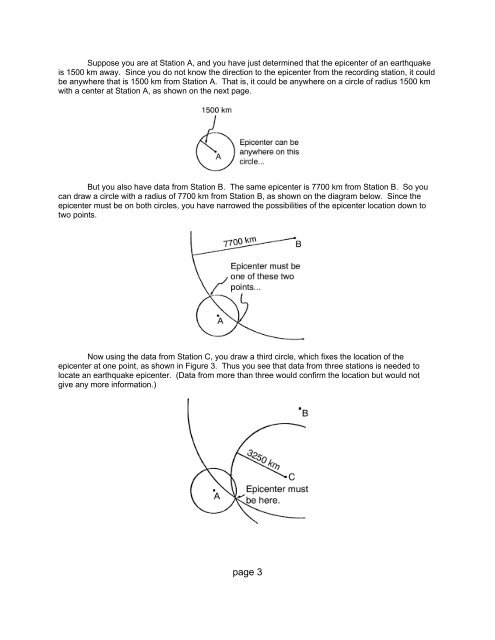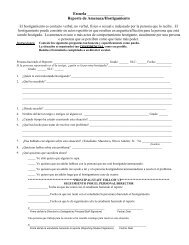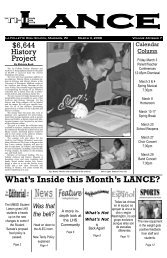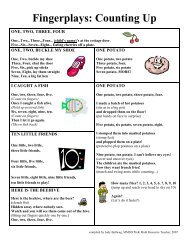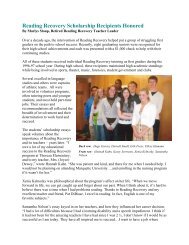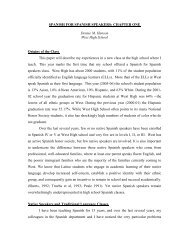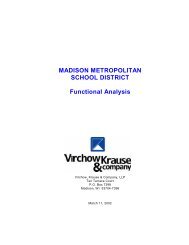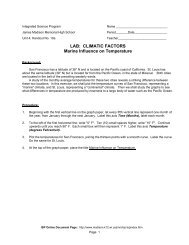lab: locating an epicenter - Malcolm Shabazz City High School ...
lab: locating an epicenter - Malcolm Shabazz City High School ...
lab: locating an epicenter - Malcolm Shabazz City High School ...
You also want an ePaper? Increase the reach of your titles
YUMPU automatically turns print PDFs into web optimized ePapers that Google loves.
Suppose you are at Station A, <strong>an</strong>d you have just determined that the <strong>epicenter</strong> of <strong>an</strong> earthquakeis 1500 km away. Since you do not know the direction to the <strong>epicenter</strong> from the recording station, it couldbe <strong>an</strong>ywhere that is 1500 km from Station A. That is, it could be <strong>an</strong>ywhere on a circle of radius 1500 kmwith a center at Station A, as shown on the next page.But you also have data from Station B. The same <strong>epicenter</strong> is 7700 km from Station B. So youc<strong>an</strong> draw a circle with a radius of 7700 km from Station B, as shown on the diagram below. Since the<strong>epicenter</strong> must be on both circles, you have narrowed the possibilities of the <strong>epicenter</strong> location down totwo points.Now using the data from Station C, you draw a third circle, which fixes the location of the<strong>epicenter</strong> at one point, as shown in Figure 3. Thus you see that data from three stations is needed tolocate <strong>an</strong> earthquake <strong>epicenter</strong>. (Data from more th<strong>an</strong> three would confirm the location but would notgive <strong>an</strong>y more information.)page 3


